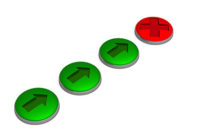In some cases, a high number of findings on a particular slaughter day may result in the questioning of the negative findings and whether the intact product, not customarily tested, is also implicated (“an event”). In other cases, a downstream test may implicate product that had previously been found negative and shipped to other facilities (in this case, the certificate of analysis (COA) sent with the product is no longer valid in light of the new positive finding).
This means that purchasers of products intended for non-intact use (e.g., ground or injected) cannot rely solely on their supplier prerequisite program to deal with such unusual situations.
In its draft Guidance on E. coli O157:H7 testing, FSIS stated that if intact products were treated with an effective intervention, the intact products may not be implicated in an event. In Directive 10,010.1, one option available to a purchaser of raw beef that did not obtain a COA is to treat the product with a validated intervention. In considering options to address unusual situations, purchasers may well consider installing an intervention. There are a number of interventions available, and which is best for a particular use is beyond the scope of this article.
That said, there is one regulatory issue on interventions at further processors that has generated some confusion: Would such an intervention be incorporated into a food-safety system as a CCP or prerequisite program? It would seem that (as modeled below) the intervention would most appropriately fit in the hazard analysis as a prerequisite program.
Remember, the further processor already addresses E. coli O157:H7 in its food-safety system. Most establishments address the presence of this pathogen through purchase specification programs. As FSIS likely would phrase it: E. coli O157:H7 is not reasonably likely to occur because the ongoing execution of the purchase specification prerequisite program prevents the hazard from occurring.
The purchase specifications make the hazard not reasonably likely to occur, but if the basis for the determination is suspect, there is a supplier event or invalidated COA. The intervention provides an alternative for supporting the decision. It addresses events and absence of COAs. As FSIS notes in its discussion of prerequisite programs in Directive 5,100.1, Rev. 3, at page 19: “Some prerequisite programs may be linked to other prerequisite programs and in essence support a decision in the hazard analysis through their relationship to one another.” Here, the purchase specifications and the intervention are linked as supporting prerequisite programs.
Please note, even though the intervention would be a prerequisite program, the establishment should be absolutely committed to implementation. This would include validating the intervention (at least some in-plant testing for micro-organisms) and conducting verification activities (to include some testing). Although the establishment would not need to meet the same demands applicable to a CCP, it should monitor the intervention, take action when the intervention is not functioning, and maintain records. The establishment will never know in advance when it will need the intervention to avoid issues should the purchase specifications not be sufficient due to an event or an invalidated COA.






Report Abusive Comment